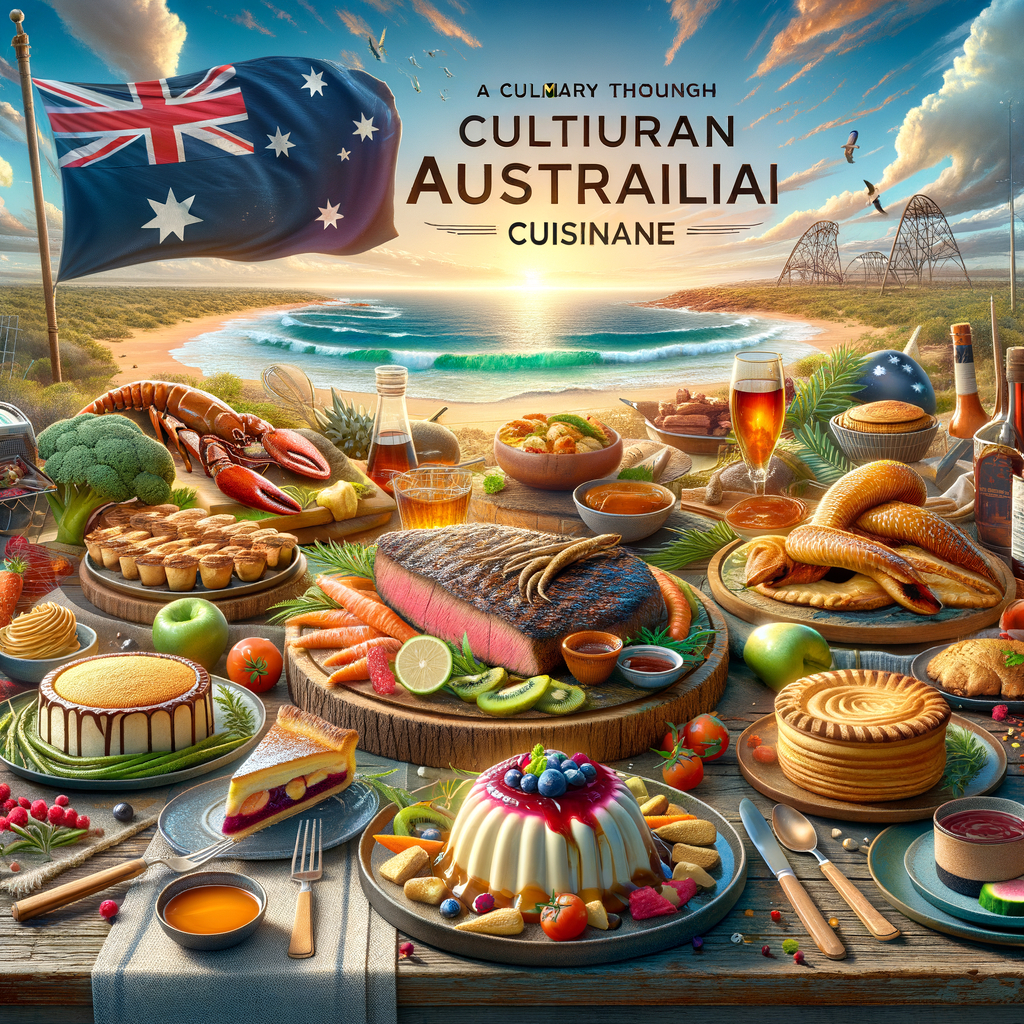Physical Address
304 North Cardinal St.
Dorchester Center, MA 02124
Physical Address
304 North Cardinal St.
Dorchester Center, MA 02124

From the sun-baked outback to the cool coastal regions, Australia’s culinary landscape is as diverse and thrilling as its breathtaking geography. The country’s cuisine is a rich melting pot of flavours, influenced by its indigenous roots and shaped by waves of immigration from Europe, Asia and the Middle East. This article takes you on a gastronomic tour of Australia, exploring its unique dishes, iconic ingredients and dynamic food culture.
Any exploration of Australian cuisine must start with its indigenous roots. For tens of thousands of years before European settlement, Aboriginal people thrived on a diet sourced entirely from the land and sea around them. This ‘bush tucker’ included kangaroo, emu, crocodile and a variety of fish and shellfish. Plant-based foods like macadamia nuts, bush tomatoes, wattleseed and finger limes were also staples.
Today, these native ingredients are being rediscovered by chefs across the country who are using them to create innovative dishes that celebrate Australia’s culinary heritage. Restaurants like Orana in Adelaide are leading this revival with menus that showcase indigenous ingredients in exciting new ways.
With the arrival of British settlers in 1788 came new food traditions that would leave an enduring mark on Australian cuisine. The British introduced livestock farming for beef and lamb which became staples in Aussie diets. Classic British dishes like roast lamb, shepherd’s pie and fish and chips have been adopted with gusto by Australians.
In the post-WWII era, waves of immigrants from countries like Italy, Greece, China, Vietnam and Lebanon brought their own food traditions to Australia. This multicultural influence has enriched Australian cuisine and made it one of the most diverse in the world.
In cities like Melbourne and Sydney, you can find everything from authentic Neapolitan pizza to spicy Szechuan stir-fry, Greek souvlaki to Lebanese shawarma. These dishes have been embraced by Australians and integrated into their everyday cuisine.
Surrounded by some of the world’s richest fishing grounds, Australia boasts an impressive array of seafood. Local favourites include Barramundi, a sweet white fish found in northern waters; Moreton Bay Bugs, a type of lobster from Queensland; and Tasmanian salmon, renowned for its rich flavour and high Omega-3 content.
The Sydney Fish Market is a must-visit for seafood lovers. As one of the largest fish markets in the southern hemisphere, it offers an incredible variety of fresh seafood from Australia’s coastal waters.
No discussion of Australian cuisine would be complete without mentioning its barbecue culture. The Aussie ‘barbie’ is not just about grilling food – it’s a social event that brings people together. Whether it’s a family gathering or a community fundraiser, there’s likely to be a barbecue involved.
Popular barbecue fare includes ‘snags’ (sausages), steaks, lamb chops and prawns, often served with salads and ‘damper’, a traditional Australian bread cooked in the coals of the fire.
Australia also has its fair share of iconic sweets. The Lamington – sponge cake coated in chocolate icing and desiccated coconut – is considered so quintessentially Australian that there’s even a National Lamington Day! Then there’s the Pavlova: this meringue-based dessert topped with whipped cream and fresh fruit has been a subject of culinary dispute between Australia and New Zealand for years, each claiming it as their own.
Australia’s cuisine is a reflection of its history, multicultural society and abundant natural resources. From indigenous bush tucker to British-inspired roasts, Asian stir-fries to Mediterranean pastas, Aussie barbecues to homegrown seafood – the country’s food scene offers a smorgasbord of flavours that tell the story of this vibrant nation. So next time you’re Down Under, be sure to embark on a culinary journey that will tantalise your tastebuds and enrich your understanding of Australian culture.